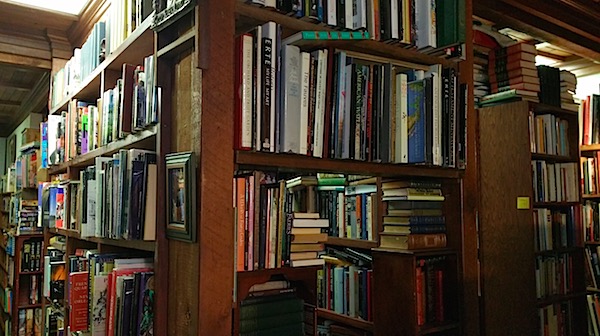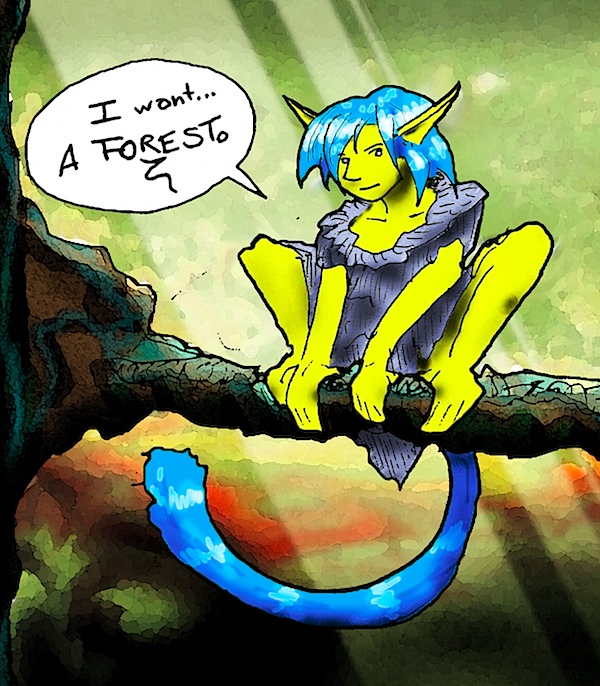
But I am going to take a rest for a bit.
Above you see a shot of my cat Lenora resting in front of the "To Read Science Fiction" section of my Library, the enormous book collection I've been accumulating over the last quarter century. I have books older than that, of course, but they're stored in my mother's house in my hometown. It's only over the last 25 years or so have I been accumulating my own personal library.
But why am I, if not resting, at least thinking about it? I finished organizing the books in my Library.

I have an enormous amount of papers, bills, bric a brac and other memorabilia still to organize, file, trash or donate, but the Library itself is organized, at last. It's even possible to use it.
How organized? Well...
Religion, politics, economics, the environment, women's studies, Ayn Rand, read books, Lovecraft, centaur books, read urban fantasy, read science fiction, Atlanta, read comics, to-read comics, to-read science fiction magazines, comic reference books, drawing reference books, steampunk, urban fantasy, miscellaneous writing projects, Dakota Frost, books to donate, science fiction to-reads: Asimov, Clarke, Banks, Cherryh, miscellaneous, other fiction to-reads, non-fiction to-reads, general art books, genre art books, BDSM and fetish magazines and art books, fetish and sexuality theory and culture, military, war, law, space travel, astronomy, popular science, physics of time travel, Einstein, quantum mechanics, Feynman, more physics, mathematics, philosophy, martial arts, health, nutrition, home care, ancient computer manuals, more recent computer manuals, popular computer books, the practice of computer programming, programming language theory, ancient computer languages, Web languages, Perl, Java, C and C++, Lisp, APL, the Art of Computer Programming, popular cognitive science, Schankian cognitive science, animal cognition, animal biology, consciousness, dreaming, sleep, emotion, personality, cognitive science theory, brain theory, brain philosophy, evolution, human evolution, cognitive evolution, brain cognition, memory, "Readings in …" various AI and cogsci disciplines, oversized AI and science books, conference proceedings, technical reports, game AI, game development, robotics, imagery, vision, information retrieval, natural language processing, linguistics, popular AI, theory of AI, programming AI, AI textbooks, AI notes from recent projects, notes from college from undergraduate through my thesis, more Dakota Frost, GURPS, other roleplaying games, Magic the Gathering, Dungeons and Dragons, more Dakota Frost, recent projects, literary theory of Asimov and Clarke, literary theory of science fiction, science fiction shows and TV, writing science fiction, mythology, travel, writing science, writing reference, writers on writing, writing markets, poetry, improv, voice acting, film, writing film, history of literature, representative examples, oversized reference, history, anthropology, dictionaries, thesauri, topical dictionaries, language dictionaries, language learning, Japanese, culture of Japan, recent project papers, comic archives, older project papers, tubs containing things to file … and the single volume version of the Oxford English Dictionary, complete with magnifying glass.
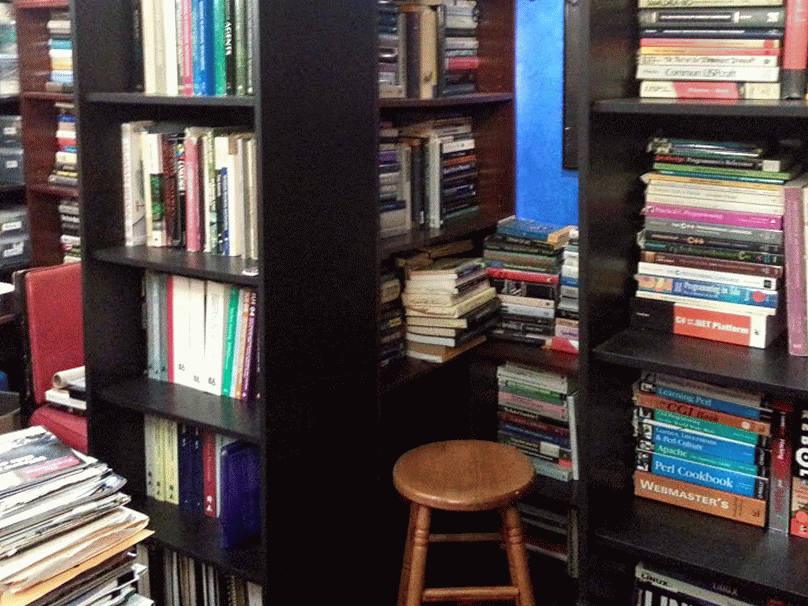
I deliberately left out the details of many categories and outright omitted a few others not stored in the library proper, like my cookbooks, my display shelves of Arkham House editions, Harry Potter and other hardbacks, my "favorite" nonfiction books, some spot reading materials, a stash of transhumanist science fiction, all the technical books I keep in the shelf next to me at work … and, of course, my wife and I's enormous collection of audiobooks.
What's really interesting about all that to me is there are far more categories out there in the world not in my Library than there are in my Library. Try it sometime - go into a bookstore or library, or peruse the list of categories in the Library of Congress or Dewey Decimal System Classifications. There's far more things to think about than even I, a borderline hoarder with a generous income and enormous knowledge of bookstores, have been able to accumulate in a quarter century.
Makes you think, doesn't it?
-the Centaur
 Not so successful experiments with light pencils on black paper. A consultation with my wife suggests Conté crayons or oil pastels as an alternative, but really, I think I prefer the brown paper of my other experiments as providing the best midtones. Even Photoshop couldn't salvage this one:
Not so successful experiments with light pencils on black paper. A consultation with my wife suggests Conté crayons or oil pastels as an alternative, but really, I think I prefer the brown paper of my other experiments as providing the best midtones. Even Photoshop couldn't salvage this one:
 The original came out pretty grainy ... these pencils just won't cut it on black paper.
The original came out pretty grainy ... these pencils just won't cut it on black paper.
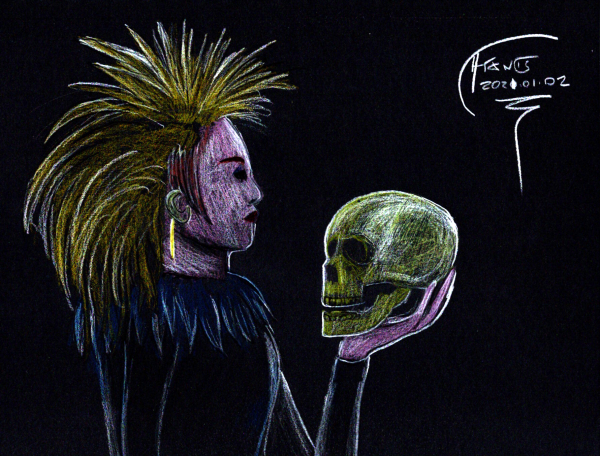 Still, drawing every day.
-the Centaur
Still, drawing every day.
-the Centaur  Bit of a rush job, as I want to turn in early tonight (and still leave a little time for Editing Every Day). Forehead a bit too high, could have used another rough sketch.
Still, drawing every day.
-the Centaur
Bit of a rush job, as I want to turn in early tonight (and still leave a little time for Editing Every Day). Forehead a bit too high, could have used another rough sketch.
Still, drawing every day.
-the Centaur  Tony Francis at Meteor Crater. Sure was windy that day. Oddly, this is one of the best pictures I have taken of my dad.
Guess I enjoyed spending time with him more than taking photos!
Drawing every day.
-the Centaur
Tony Francis at Meteor Crater. Sure was windy that day. Oddly, this is one of the best pictures I have taken of my dad.
Guess I enjoyed spending time with him more than taking photos!
Drawing every day.
-the Centaur  Ran out of time unpacking and organizing my library, so no digital sketch today. All I had time to do was a hand sketch of Uncle Boo, which I took on in hopes that I'd do better than the digital one (or at least figure out where I went wrong). Other than imagining connections instead of seeing and drawing them, the number one thing I walked away with was, man, I need to find and unpack my art supplies.
Though the resemblance to my dad is more striking in a drawing ...
Ran out of time unpacking and organizing my library, so no digital sketch today. All I had time to do was a hand sketch of Uncle Boo, which I took on in hopes that I'd do better than the digital one (or at least figure out where I went wrong). Other than imagining connections instead of seeing and drawing them, the number one thing I walked away with was, man, I need to find and unpack my art supplies.
Though the resemblance to my dad is more striking in a drawing ...
 Perhaps I've found my next drawing subject ...
Still, drawing every day.
-the Centaur
Perhaps I've found my next drawing subject ...
Still, drawing every day.
-the Centaur
 Bit off more than I could chew this time, attempting to do full coloring layers. Had to give up about a third of the way through because it is way past bedtime, even for me. Not happy with the sketch or the result, didn't really get to flesh this one out the way I wanted to.
Still, drawing every day.
-the Centaur
Bit off more than I could chew this time, attempting to do full coloring layers. Had to give up about a third of the way through because it is way past bedtime, even for me. Not happy with the sketch or the result, didn't really get to flesh this one out the way I wanted to.
Still, drawing every day.
-the Centaur  Little sketchier this time. But drawing every day.
-the Centaur
Little sketchier this time. But drawing every day.
-the Centaur  -the Centaur
-the Centaur 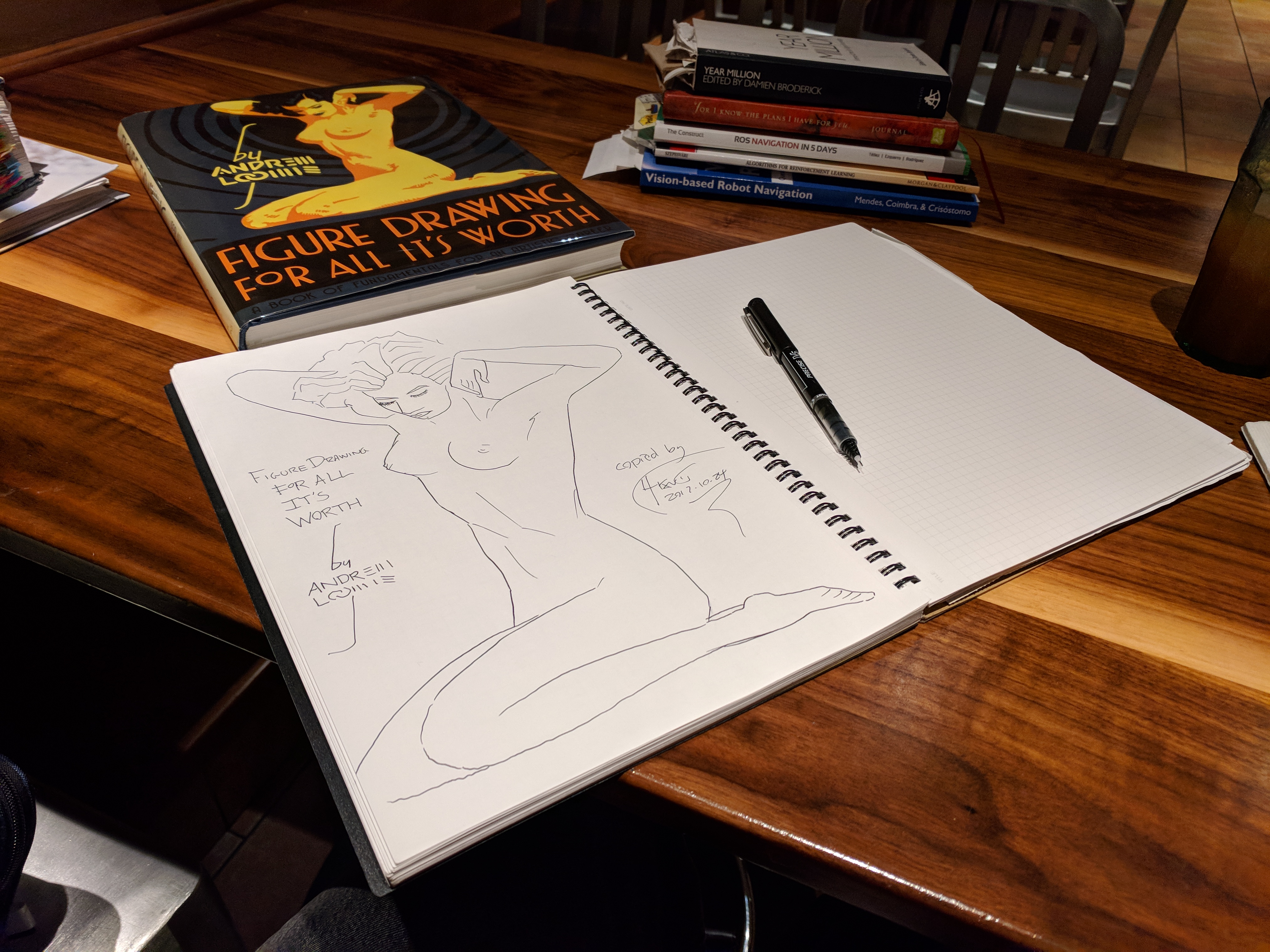 Daily Sketchworks: trying to reproduce the cover of Andrew Loomis's
Daily Sketchworks: trying to reproduce the cover of Andrew Loomis's  To be wholly frank, I'll use whatever tools I have to to make me do more drawing.
To be wholly frank, I'll use whatever tools I have to to make me do more drawing.
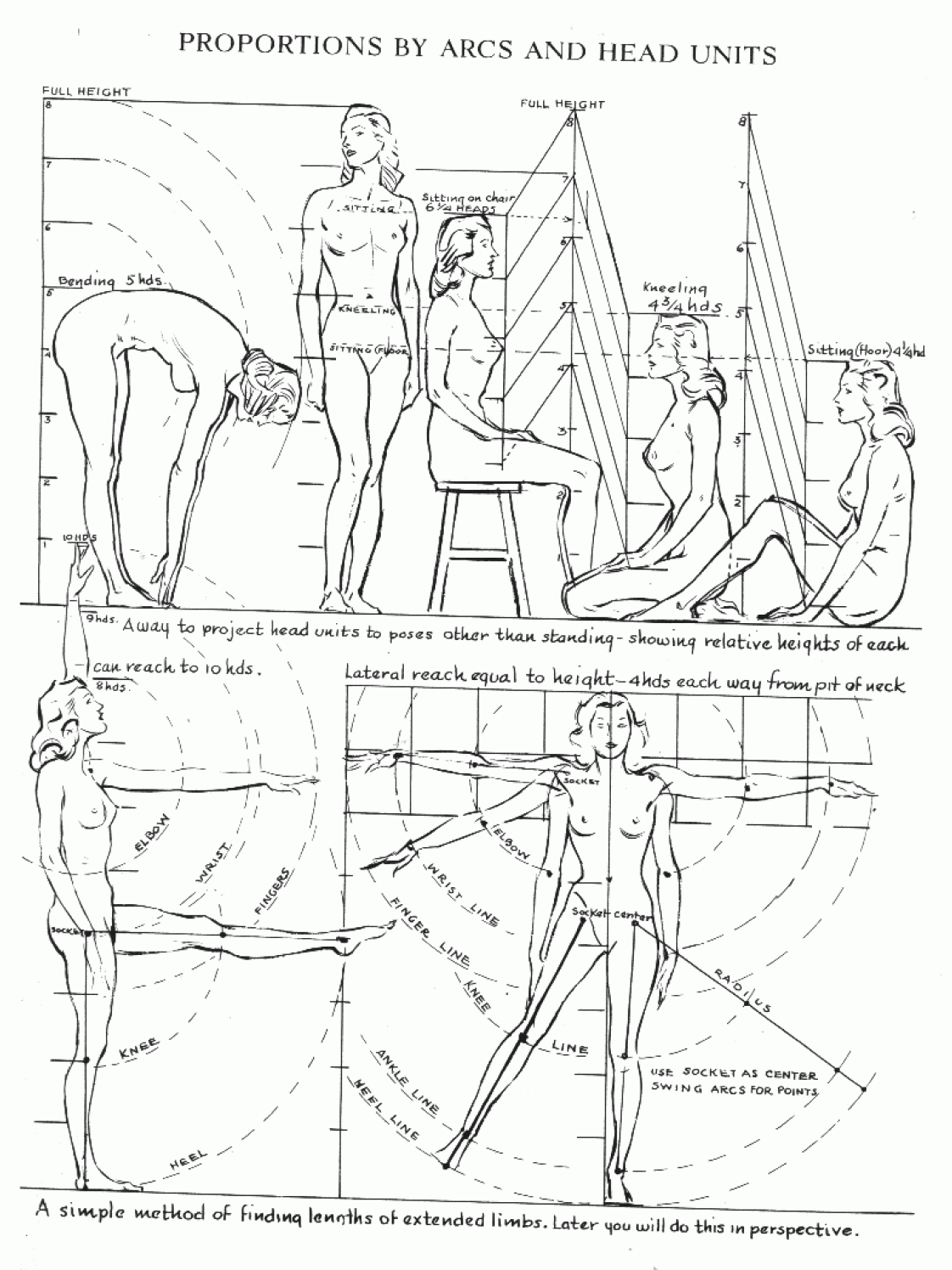 -the Centaur
-the Centaur  How much can you draw before they bring your food? Fountain at Front Page News L5P, again with no pencils.
How much can you draw before they bring your food? Fountain at Front Page News L5P, again with no pencils.
 -the Centaur
-the Centaur  The challenge on this one: no pencils, no references, just straight freeform inking.
The challenge on this one: no pencils, no references, just straight freeform inking. 



